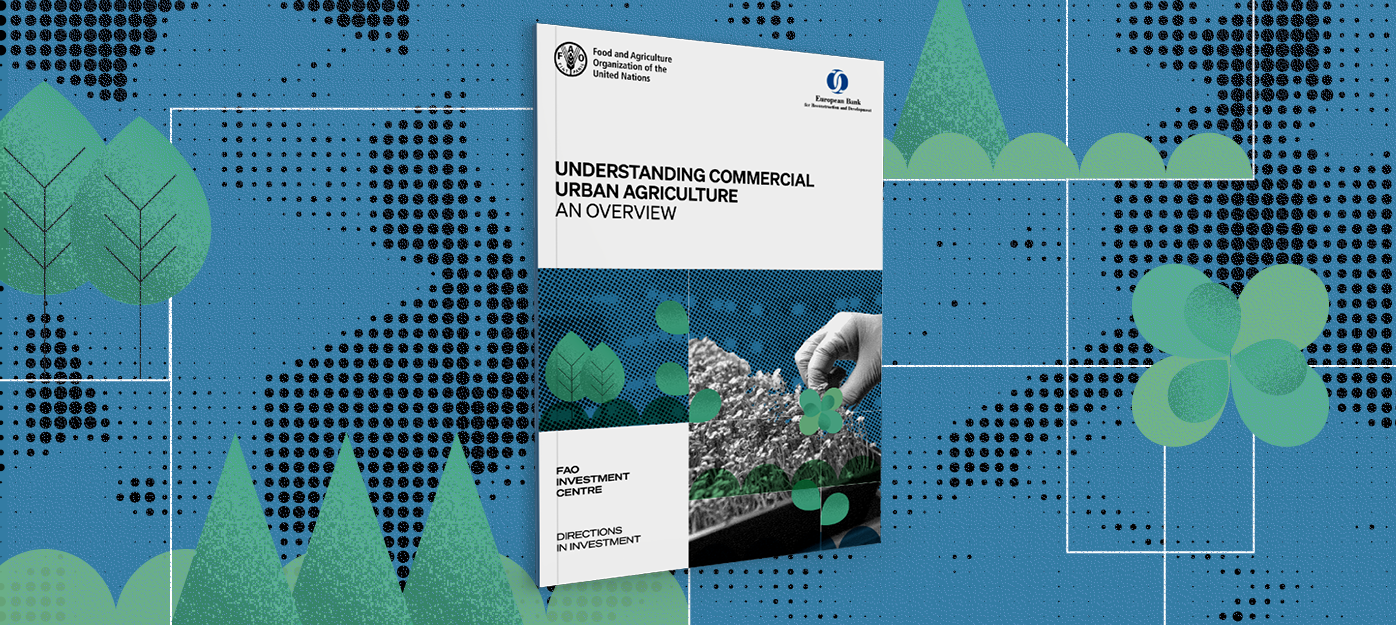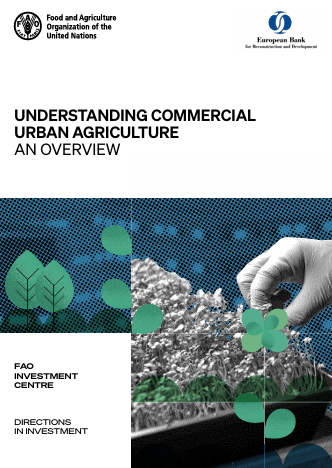Urban agriculture is experiencing a growth spurt
Innovation and investments can shape the sector’s sustainable development

Understanding commercial urban agriculture - An overview
©FAO
Commercial urban agriculture can help stabilize local vegetable supply chains and reduce reliance on global food markets. With the advent of new, high-tech farming systems, it has rapidly evolved into a capital-attracting business over the last 20 years, worth more than USD 5 billion globally.
A new report by the European Bank for Reconstruction and Development (EBRD) and the Food and Agriculture Organization of the United Nations (FAO) explores the new wave of urban farming initiatives. It also identifies scalable approaches and areas where public and private investment can shape the sustainable growth of commercial urban agriculture.
Understanding commercial urban agriculture: an overview is the result of a comprehensive cross-regional study conducted by the EBRD and FAO in 2023.
The report also reflects information and data gathered from a series of e-dialogues involving around 950 participants, including representatives from nearly 200 companies in 65 countries.
“Investments in commercial urban agriculture are on the rise due to fast-paced advances in technology and innovative farming techniques,” said FAO Investment Director Mohamed Manssouri, “and also due to growing interest among young and motivated entrepreneurs, including those not traditionally involved in farming such as IT specialists and engineers.”
A look at the pros
According to the study, the preferred crops for high-tech commercial urban agriculture are those with a high harvest index, such as leafy greens, herbs and microgreens.
Some companies are also venturing into new areas, such as the production of raw materials for the food processing and pharmaceutical industries.
By growing plants with controlled environment agriculture technologies in and around cities – greenhouses or indoor vertical farms, for example, using remote-control systems, robotics, LED lighting and soilless mediums like hydroponics – commercial urban agriculture can offer important environmental advantages.
It uses less water and land. It also uses fewer or no pesticides. And because production is closer to the end consumer and can be planned more efficiently, it helps cut down on food loss.
And successfully navigating the challenges
But the downside is that it can also contribute to greenhouse gas emissions if its high energy requirements are supplied by non-renewables, or if the technologies adopted are not efficient.
The study found that nearly half of all high-tech farming is done on vertical farms in large, fully controlled environments. The use of advanced equipment for lighting, heating and cooling drives up operational costs and makes companies vulnerable to energy price shocks.
Many farms now produce part of their own energy through biogas, solar, wind or geothermal sources.
But as commercial urban agriculture grows and expands, companies will increasingly need to find clean, reliable and affordable sources of energy to stay afloat and reduce their carbon footprint, said Iride Ceccacci, Head of Corporate Sector Advisory from the EBRD.
“A supportive policy environment coupled with an influx in public and private investments in areas such as the research and development of innovations and technologies that can improve outputs and increase efficiency, in modern energy grids and other essential infrastructure, could help the sector overcome some of the major challenges it faces,” she said.
She added that the “the successful adoption and scaling up of advanced innovations also hinges on investing in a highly skilled and specialized workforce.”
And while costs are declining, more needs to be done to ensure people in low-income economies also have access to these advanced technologies and knowledge to drive change and increase productivity. Otherwise, the sector risks becoming niche and exclusive.
The study notes that the success of commercial urban agriculture investments obviously depends on a country’s specific economic, social, infrastructure, education and environmental context. An analysis of this context is an important prerequisite in investment planning.
It also suggests that a balanced approach combining knowledge, technology and finance can shape the sector’s growth, maturity, sustainability and overall contribution to the agriculture sector.

